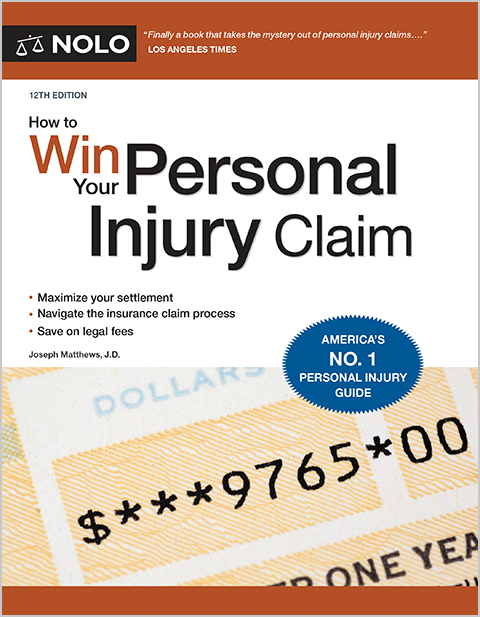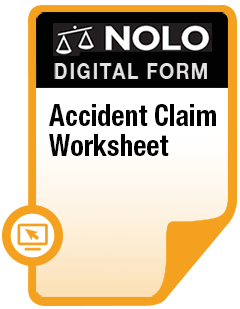Learn the basics of New York wrongful death law, including what a "wrongful death" is, who can sue, the kinds of damages you can collect, how long you have to sue, and more.
"Can I file a lawsuit for the death of a relative in New York?"
If that question or something like it is what brought you here, you're in the right place. When a person dies in New York because of someone else's accidental or intentional wrongdoing, the deceased person's estate might be able to bring a wrongful death insurance claim or lawsuit.
We begin with a brief introduction to wrongful death cases generally. From there, we'll look at the laws covering New York wrongful death claims, including how the state defines "wrongful death," who can file a wrongful death lawsuit, the compensation ("damages") available in a successful wrongful death case, and the time limit for getting your case started.
What Is a Wrongful Death Case?
A wrongful death case is a claim for money damages arising out of the unlawful killing of a person, sometimes called the "decedent." Every state has a wrongful death law on its books. If you're looking to bring a wrongful death insurance claim or lawsuit, that law will be your starting point. Because the right to bring a wrongful death case arises from state statutes, you must closely follow the statutory requirements or your case can be thrown out of court.
What Is a Wrongful Death?
The term "wrongful death" is a catch-all for the unlawful killing of a person. For purposes of a wrongful death claim, what usually matters is that a death occurred, not so much how it happened. Death might be caused, for example, by an intentional act like a battery, by a negligent driver running a red light, by a careless homeowner failing to remove accumulated ice from a sidewalk, or by medical malpractice.
Here's the bottom line: When death results from another's intentional or negligent wrongdoing, a wrongful death claim is possible. Whether that claim succeeds—and if so how much it's worth—both depend on the facts of the case.
It Might Be a Crime, Too
The same act that gives rise to a wrongful death claim might also be a crime. Suppose Mike and Dave are neighbors who don't get along. One day after a heated argument, Mike pulled a handgun and shot Dave, killing him. Mike will be prosecuted by the state for murder or manslaughter, charges that are likely to land him in prison. Dave's surviving family members can sue Mike to collect wrongful death damages, too.
Don't Confuse Survival and Wrongful Death Claims
A wrongful death claim compensates a decedent's surviving family members for their damages, like loss of financial support and loss of the decedent's companionship and affection. The "meter" on those damages starts running at the moment of death, and it continues for what would have been the decedent's life expectancy had death not happened.
A survival action, by contrast, is brought by the decedent's estate to recover damages the decedent suffered up to the moment of death. For example, say Karen was catastrophically injured in a fire caused by a defective product. She was hospitalized for several weeks before succumbing to her injuries. A survival claim would compensate Karen's estate for Karen's damages—things such as medical expenses, lost earnings, and conscious pain and suffering—from the date of her injuries up to the date of her death.
Because they're meant to compensate for different injuries and damages, both wrongful death and survival claims might follow from the same death.
How Does New York Define "Wrongful Death"?
A New York "wrongful death" happens when the decedent:
- died because of "a wrongful act, neglect or default," and
- could have filed a personal injury lawsuit had they lived.
(N.Y. Est. Powers & Trusts Law § 5-4.1.1 (2024).)
New York law, for the most part, isn't concerned with how the death happened. When it was caused by some "wrongful" act or omission—whether negligent or intentional (including crimes)—it's a wrongful death. Don't worry about the "could have filed a personal injury lawsuit" requirement, either. Any time a person dies because of another's wrongful behavior, they would have been able to bring a personal injury claim had they survived.
Note that the state's Court of Appeals—New York's version of a state supreme court—has ruled that New York law doesn't recognize wrongful death claims when a fetus dies before birth, even if the death was caused by the wrongful act of another party. (Endresz v. Friedberg, 24 N.Y.2d 478 (1969).)
Who Files and Benefits From a New York Wrongful Death Lawsuit?
In New York, the personal representative of a decedent's estate can file a wrongful death lawsuit when the decedent was survived by one or more of the relatives (the law calls them "distributees") described in New York's inheritance law. All wrongful death damages are held "exclusively for the benefit" of these surviving relatives, who share them in this order of preference:
- the surviving spouse and children
- parents
- brothers and sisters
- grandparents, their children, and their grandchildren, and
- great-grandchildren.
So, for example, if the decedent is survived by a spouse and children, they get all the wrongful death damages. If the decedent left no spouse or children, the decedent's surviving parents collect all the damages. When no parents survive, the decedent's brothers and sisters split the recovery.
There's one exception to this order of preference. When the decedent left a surviving spouse and parents but no children, the parents share the damages with the surviving spouse.
How is each survivor's share of the wrongful death damages calculated? There are two possibilities. The surviving relatives can agree on a distribution. Barring extraordinary circumstances, the court will approve a distribution the survivors find suitable.
When the survivors can't agree, the court holds a hearing. Each survivor who wants a share of the damages must present evidence proving their past and future financial losses because of the decedent's death. After the hearing, the court orders a distribution based on each survivor's share of the total financial losses suffered by all survivors who are entitled to a portion of the damages.
(N.Y. Est. Powers & Trusts Law §§ 1-2.5, 4-1.1, 5-4.1.1, 5-4.4(a) (2024).)
Damages in a New York Wrongful Death Case
Wrongful death damages are meant to provide "fair and just compensation" to surviving relatives for financial losses they suffer because of the decedent's death. (N.Y. Est. Powers & Trusts Law § 5-4.3(a) (2024).)
Here are some of the damages commonly awarded in New York wrongful death cases:
- funeral and burial expenses paid by the survivors
- reasonable health care expenses for the decedent's final injury or illness paid by the survivors
- financial support the decedent would have contributed to the family
- the value of household and other services the decedent would have provided to the family
- the value of parental nurturing, care, and guidance to surviving children
- survivors' lost inheritance, and
- interest on the damages award, calculated from the date of death.
Note that New York doesn't allow surviving relatives to recover damages for their own pain and suffering, mental anguish, or loss of companionship.
Punitive damages—designed to punish a wrongdoer for extreme and outrageous misconduct—are available in New York wrongful death cases. (N.Y. Est. Powers & Trusts Law § 5-4.3(b) (2024).) But proving that level of blameworthiness is very difficult, and they're rarely awarded.
Finally, while many states limit, or "cap," damages in a personal injury or wrongful death case, New York isn't one of them. New York has no caps, meaning you can collect the full amount of wrongful death damages a jury or court awards.
New York's Wrongful Death Lawsuit Filing Deadline
New York law puts a deadline, called a "statute of limitations," on your time to file a wrongful death lawsuit. For most wrongful death claims, the deadline is two years from the date of death. (N.Y. Est. Powers & Trusts Law § 5-4.1.1 (2021).)
Exceptions to the Two-Year Rule
New York's general two-year filing deadline applies in most, but not all, cases. Here are some exceptions to the general rule.
- Medical malpractice. When death results from medical malpractice, the statute of limitations is usually two years and six months from the date of death. (N.Y. C.P.L.R. § 214-a (2024).)
- Criminal charges pending. If the person responsible for the death has a criminal case pending because of the death, the statute of limitations is one year from the date the criminal case ends. (N.Y. Est. Powers & Trusts Law § 5-4.1.2 (2024).)
- Legal disability. People who are legally disabled—unable to manage their own legal affairs—typically get extra time to sue. (N.Y. C.P.L.R § 208 (2024).)
- Can't start a lawsuit. When you can't start a lawsuit because the defendant (the party you're suing) lives outside New York, leaves the state, or lives in New York under a fake name, the statute of limitations clock might be temporarily paused. (N.Y. C.P.L.R § 207 (2024).)
- Suing the government. When you sue New York or one of its political subdivisions, you'll face special notice requirements and shorter filing deadlines. (See, for example, N.Y. C.P.L.R § 217-a (2024).)
What Happens If You Miss the Filing Deadline?
The statute of limitations has one job: To kill claims that aren't filed in time. Miss the statute of limitations and, absent an extension that gives you more time, your wrongful death claim is legally dead. Nothing you do will bring it back to life. Try to file a lawsuit after time runs out and the defendant will ask the court to dismiss it. The court will have no choice but to grant that request. Worse still, the court might sanction (penalize) you for filing a frivolous court case.
Statutes of limitations are among the most difficult and confusing of all laws. If you're not sure how much time you have to file your wrongful death case, your first call should be to an experienced New York wrongful death attorney. Don't delay making the call, because time is the enemy of your claim.
Other Questions About Your Wrongful Death Case
Here are answers to some other questions you might have about your New York wrongful death claim.
Where Is a Wrongful Death Lawsuit Filed?
In most wrongful death cases, your lawyer will probably file a lawsuit in the New York Supreme Court, the state's main trial court. The correct "venue," or location, is usually the court closest to where the defendant lives or has its main place of business, or where the event that caused the death happened.
When your wrongful death case is against New York, you must sue in the Court of Claims. Other special rules apply as well.
(Learn more about New York courts and how they work.)
What If the Decedent or a Survivor Also Was Negligent?
New York is a comparative negligence state. When the decedent's own negligence or the negligence of a surviving relative contributed to cause the decedent's death, the wrongful death damages must be reduced by the decedent's or survivor's percentage share of the total fault. The survivors can still collect some damages as long as they and the decedent weren't 100% to blame for what happened.
For example, assume the decedent was killed in a car wreck. After a trial, the jury decides the decedent was 25% at fault for the collision, while the other driver was 75% to blame. Jurors assess the surviving family members' total damages at $1 million. The court will reduce that total by the decedent's share of the negligence: $1 million - $250,000 (25% of the total) = $750,000. The survivors will collect $750,000.
What's the result if the decedent was found to be 99% responsible for the collision? The survivors collect 1% of their total damages: $1 million x 1% = $10,000.
(N.Y. C.P.L.R § 1411 (2024).)
Does New York Allow a Survival Action, Too?
Yes. New York has a separate survival statute, found at N.Y. Est. Powers & Trusts Law § 11-3.2(b) (2024). When death wasn't instantaneous, the personal representative can bring a survival action alongside the wrongful death claim to collect damages the decedent suffered up to the time of death.
Do I Need a Lawyer for a Wrongful Death Case?
In a word: Yes. A wrongful death case is like two cases in one. First, you have to prove that someone's intentional or negligent wrongdoing killed the decedent. Second, while you're busy doing that, you also have to satisfy all the statutory wrongful death requirements. And if that's not enough, you'll have to comply with a variety of court rules that are, at best, difficult to understand and apply.
Chances are that your opponent will be represented by counsel who know their way around wrongful death claims. It won't be a fair fight unless you've got legal help on your side, too. When you're ready to move forward with your claim, here's how to find a lawyer who's right for you.


